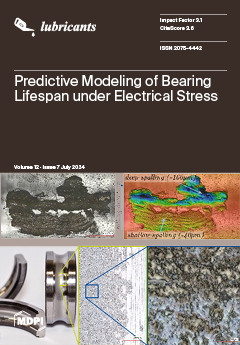With the continuous advancement of industrial technology, higher demands have been placed on the properties of gear oils, such as oxidation stability and shear resistance. Herein, the oxidation stability of high-viscosity metallocene poly-
-olefins (mPAOs) was improved by chemical modification via aromatic
[...] Read more.
With the continuous advancement of industrial technology, higher demands have been placed on the properties of gear oils, such as oxidation stability and shear resistance. Herein, the oxidation stability of high-viscosity metallocene poly-
-olefins (mPAOs) was improved by chemical modification via aromatic amine alkylation. The modified mPAO base oils were synthesized separately with diphenylamine (mPAO-DPA) and N-phenyl-
-naphthylamine (mPAO-NPA), and their applicability in industrial gear oil formulations was evaluated. The composition and physicochemical properties of the obtained samples were assessed using
1H NMR spectroscopy, Fourier transform infrared spectroscopy, gel permeation chromatography, and the American Society for Testing and Materials standards (ASTM D445, ASTM D2270, ASTM D92, etc.) confirming the successful completion of the alkylation reaction. The oxidation stability of the samples was also evaluated using pressurized differential scanning calorimetry. The initial oxidation temperature of mPAO-NPA (230 °C) was 53 °C higher than that of mPAO, and the oxidation induction period of mPAO-DPA was nearly twice that of mPAO-NPA. Thermogravimetric analysis in air revealed the increased thermal decomposition temperature and improved thermal stability of modified mPAO. ISO VG 320 industrial gear oils were formulated using mPAO alkylated with N-phenyl-
-naphthylamine(Lub-2) and commercially purchased PAO100 (Lub-1) as base oil components. The antioxidant performance of two industrial gear oils was evaluated through oven oxidation and rotating oxygen bomb tests. The oxidation induction period of Lub-2 was 30% higher than that of Lub-1, with the latter having a lower acid number and a smaller increase in viscosity at 40 °C. Finally, the friction performance of the samples was assessed on a four-ball friction tester, revealing the synergistic effect of the mPAO-NPA base oil with the HiTEC 3339 additive, forming a more stable oil film with a smaller wear scar diameter.
Full article





